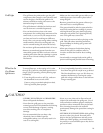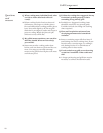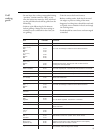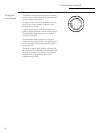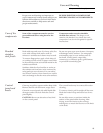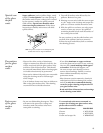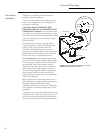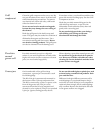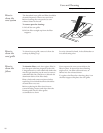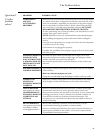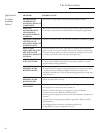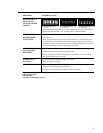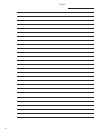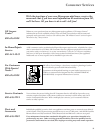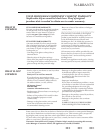
27
Grill
component
Clean the grill component after every use. Do
not put the element into water. It cleans itself
when heated during normal use. To remove
any charred soil, clean with a dry, stiff brush
when the element is cool.
Never use steel wool or metal scouring pads
because they may damage the outer casing of
the element.
Wash the grill grate in the sink in soap and
water. The grate may be soaked in a solution of
dishwasher detergent and hot water. Use a
non-metal scouring pad if necessary. Do not
use abrasive cleaning products. The grill grate
can also be cleaned in a self-cleaning oven.
From time to time, you should recondition the
grate with no-stick cooking spray. See the Grill
Component section.
Wash the porcelain enamel drip pan in the
sink with soap and water, or put it in the
dishwasher. Soak stubborn stains, then rub
gently with a scouring pad.
Do not put the drip pan in the oven during a
self-cleaning cycle. Doing so will cause
discoloration and damage the finish.
Porcelain
enamel
grease well
Porcelain enamel can crack or chip with
misuse. It can stain if spillovers of foods with a
high acid content (such as tomatoes or lemon
juice) are not cleaned up quickly.
When cleaning a porcelain enamel grease well,
be careful not to get the electrical receptacles
wet. Do not try to fill the well with water when
cleaning. Be sure the drain hole and tube in the
grease well are not clogged.
Grease jars
On the underside of the grill cooktop
component, a grease jar is mounted to catch
fat and drippings.
The lid of the jar is permanently mounted to
the bottom of the cooktop component box.
The lid is connected by a tube to a spout at the
front of the grease well. The jar can be
unscrewed from the lid to be emptied and
cleaned or to be replaced. The jar is a standard
1-pint jar. Quart canning jars may also fit.
Do not use thin-walled glass or plastic jars, such
as those having contained food products. Such
jars could fracture.
Different foods give different amounts of fat
and drippings, so you should inspect the jar
each time it is used. If the jar is not emptied or
replaced often enough, the fat and drippings
may overflow. Be sure the drain hole and tube
in the grease well are not clogged.



